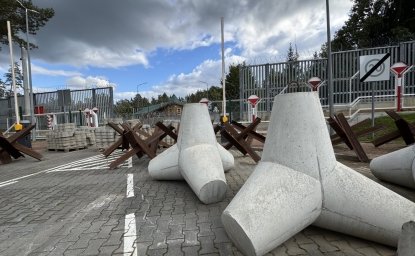Latest IAEA Reports Hint That Iran's Nuclear Program Is Doing Weapons Work
As UN nuclear chief Yukiya Amano issues his first reports on Iran and Syria since taking office in December, Public Policy Scholar Michael Adler analyzes the new releases.
As UN nuclear chief Yukiya Amano issues his first reports on Iran and Syria since taking office in December, Public Policy Scholar Michael Adler analyzes the new releases.
In his first report on Iran, UN nuclear chief Yukiya Amano takes his International Atomic Energy Agency (IAEA) into uncharted territory, speaking forthrightly about the possible military dimensions of the Islamic Republic's program. He insinuates that Iran is currently doing weapons work, in contradiction with the last U.S. National Intelligence Estimate in 2007 which said that Iran had halted its weaponization research in 2003. Amano speaks frankly about "details relating to the manufacture of components for high explosives initiation systems...which seem to have continued beyond 2004." This would seem to hint that the new NIE from the United States that is under final review in Washington may revise the 2007 estimate.
Amano's predecessor, Mohamed ElBaradei, had been more cautious, insisting that there was no evidence Iran was seeking nuclear weapons. ElBaradei also said that intelligence data supplied to the IAEA, mainly from the United States, about alleged Iranian nuclear weapons work had not been proven to be valid, But Amano says the intelligence documents are "broadly consistent and credible in terms of the technical detail, the time frame in which the activities were conducted and the people and organizations involved. Altogether, this raises concerns about the possible existence in Iran of past or current undisclosed activities related to the development of a nuclear payload for a missile." These alleged activities have been to design a re-entry pod that would fit on a missile.
This hardening of the UN agency's estimate of Iran's nuclear work comes at a time when the United States is seeking to sanction the Islamic Republic over its atomic ambitions. Washington will be able to point to the IAEA evaluation as yet one more sign that punitive measures are needed.
The report also documents the Islamic Republic's increasing enrichment levels of uranium. It is now refining to almost 20 percent. This is much closer to weapons-grade than before and has reinforced concerns from the United States and other world powers than Iran seeks to make nuclear weapons. Iran, however, claims its program is a peaceful effort to generate electricity. Iran has started to enrich from the 3.5 percent level needed for nuclear fuel for power reactors to a level of 19.75 percent need to make medical isotopes for diagnostic tests. Experts note that while Iran can up its enrichment levels, it does not have the technology needed to convert the uranium into the fuel assemblies needed for the research reactor in Tehran that would make the isotopes.
A startling revelation in the IAEA report is that Iran is apparently moving to increase the enrichment level for almost all its stockpile of some 2,000 kilograms of low-enriched uranium. The amount of uranium needed to make the fuel Iran would need to re-stock the Tehran reactor is believed to be only 1,200 kilograms of low-enriched uranium. But the IAEA said Iran "moved approximately 1,950 kg of low enriched UF6" from its underground main refining site at Natanz to a smaller site aboveground where it is running just one cascade of 164 centrifuges to boost the enrichment level. The concern is that enriching uranium to 20 percent is in fact most of the work to getting to the weapons level of over 90 percent, due to the exponential nature of the process. Paradoxically, it takes more to enrich from 0 to 20 percent than it does to enrich from 20 percent to over 90 percent.
The report on Syria concerns an installation which Israeli planes bombed in September 2007 on suspicion it was a nuclear reactor under construction. The report says "the information and access provided by Syria to date has not allowed the Agency to confirm Syria's statements regarding the non-nuclear nature of the destroyed building."


